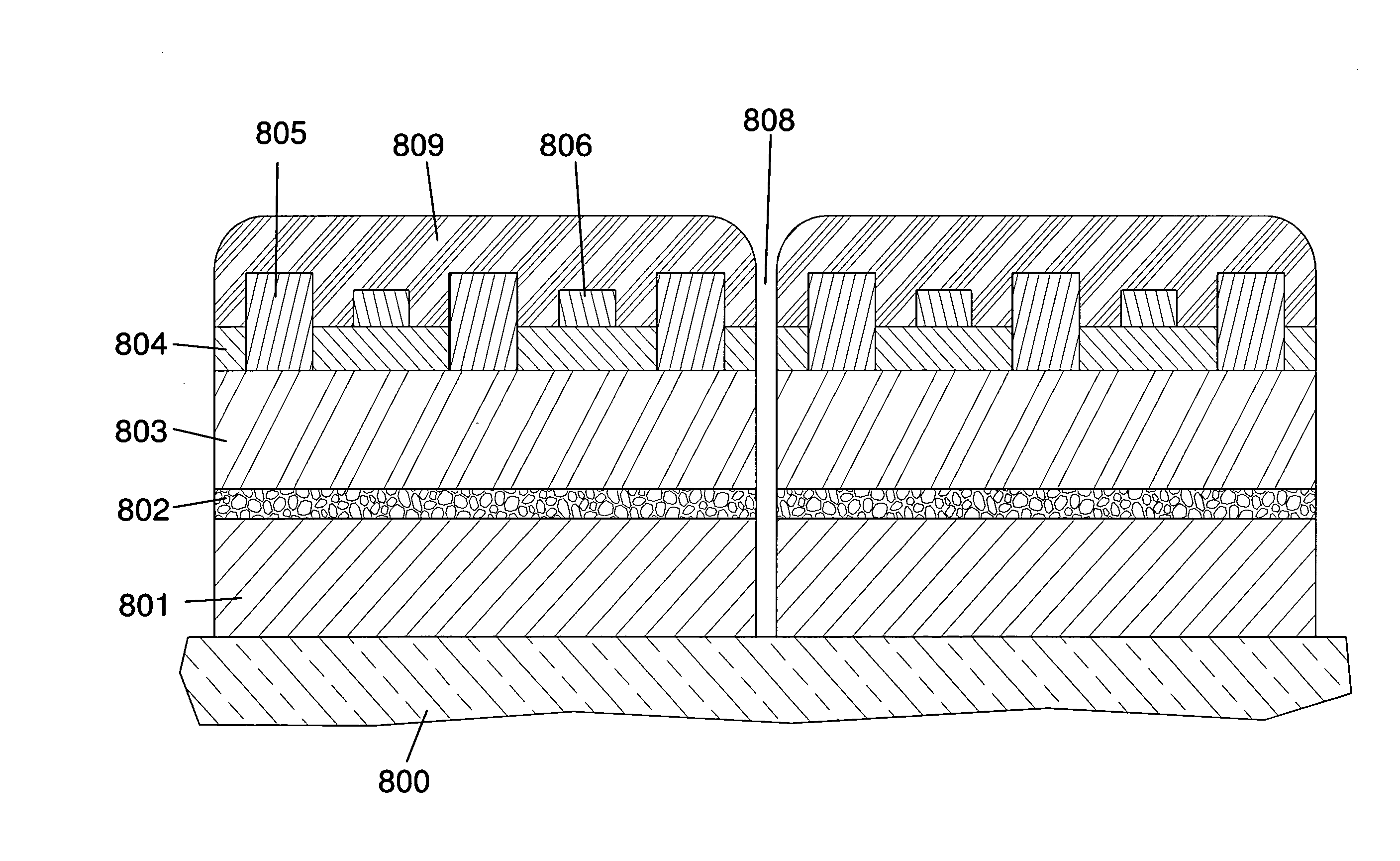Integrated method and system for manufacturing monolithic panels of crystalline solar cells
- Summary
- Abstract
- Description
- Claims
- Application Information
AI Technical Summary
Benefits of technology
Problems solved by technology
Method used
Image
Examples
embodiment 1
Attachment of the Wafers Prior to Formation of the Porous Layer, with the Use of Thin Film Contacts
[0113]The flow chart of FIG. 20 illustrates a first embodiment of the first part of a manufacturing process for solar panels. In this process, in step 201, a number of mother wafers are attached to a susceptor, as described in FIGS. 2-4 above. The number of mother wafers may correspond to the full number of PV wafers in a solar panel or a fraction of the full number. Next, in step 202, porous silicon layers are formed on the surfaces of all the mother wafers using an anodization system such as that shown in FIGS. 5 and 6. One or more susceptors are then mounted into a wafer sleeve as shown in FIG. 8, which is designed to interface with an epitaxial reactor such as that described in U.S. patent application Ser. No. 12 / 392,448.
[0114]In step 203, the wafer sleeve comprising one or more susceptors loaded with mother wafers is heated to thermally smooth the surfaces of the porous silicon la...
embodiment 2
Attachment of the Wafers Prior to Formation of the Porous Layer with the Use of Thick Film Contacts
[0118]The flow chart of FIG. 21 illustrates a second embodiment of the first part of a manufacturing process for solar panels. In this process, in step 221, a number of mother wafers are attached to a susceptor, as described above for FIGS. 2-4. The number of mother wafers may correspond to the full number of PV wafers in a solar panel or a fraction of the full number. Next, in step 222, porous silicon layers are formed on the surfaces of all the mother wafers using an anodization system such as that shown in FIGS. 5 and 6. One or more susceptors are then assembled into a wafer sleeve as shown in FIG. 8, which is designed to interface with an epitaxial reactor such as that described in U.S. patent application Ser. No. 12 / 392,448.
[0119]In step 223, the wafer sleeve comprising one or more susceptors loaded with mother wafers is then heated to thermally smooth the surfaces of the porous s...
embodiment 3
Attachment of the Wafers After the Formation of Porous Layers on Each Wafer with the Use of Thin Film Contacts
[0123]The flow chart of FIG. 21 illustrates a third embodiment of the first part of a manufacturing process for solar panels. In this process, in step 241, porous silicon layers are first formed on the surfaces of each individual mother wafer using an anodization system such as that shown in FIG. 7. Next, a number of mother wafers are attached to a susceptor in step 242, as described above for FIGS. 2-4. The number of mother wafers may correspond to the full number of PV wafers in a solar panel or a fraction of the full number. One or more susceptors are then assembled into a wafer sleeve as shown in FIG. 8, which is designed to operate in an epitaxial reactor. The wafer sleeve comprising one or more susceptors loaded with mother wafers is then heated in step 243 to thermally smooth the surfaces of the porous silicon layers. This thermal smoothing process provides a sufficie...
PUM
 Login to View More
Login to View More Abstract
Description
Claims
Application Information
 Login to View More
Login to View More - R&D
- Intellectual Property
- Life Sciences
- Materials
- Tech Scout
- Unparalleled Data Quality
- Higher Quality Content
- 60% Fewer Hallucinations
Browse by: Latest US Patents, China's latest patents, Technical Efficacy Thesaurus, Application Domain, Technology Topic, Popular Technical Reports.
© 2025 PatSnap. All rights reserved.Legal|Privacy policy|Modern Slavery Act Transparency Statement|Sitemap|About US| Contact US: help@patsnap.com



